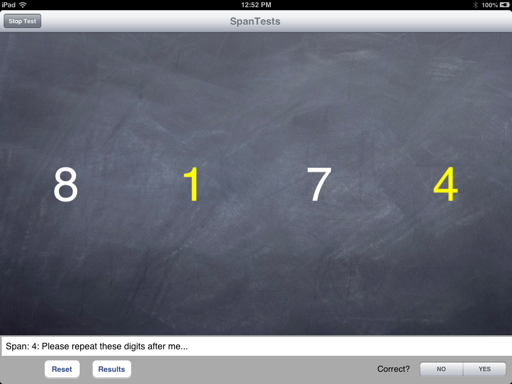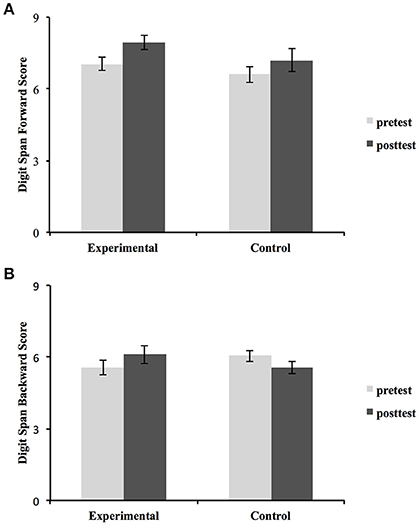

Here, we describe a multidimensional dataset containing electroencephalography (EEG), electrocardiography (ECG), photoplethysmography (PPG), pupillometry, and behavioral response data collected from 86 participants during performance of digit span task. Such a dataset would provide an essential resource for connecting more than a century’s worth of experimental psychological data with research on the brain mechanisms underlying cognitive load and working memory. Specifically, there is no publicly available dataset including electrophysiological and peripheral physiological responses on an item-by-item basis in the digit span task under different memory load conditions. However, despite its long history and popularity among experimental and clinical psychologists – the auditory digit span task is a part of the Wechsler Adult Intelligence Scale – data on the neural basis of sequential memory encoding and maintenance have not been made public. Paradigms such as the digit span task have been used to study the cognitive and neural mechanisms underlying WM, and the nature of WM capacity limitations.

This task involves the sequential encoding of a string of digits (akin to briefly memorizing a telephone number), their maintenance over a few seconds, and their retrieval, with memory load ranging from within to beyond an individual’s capacity limit.

One of the oldest WM tasks is the digit span task, dating back to 1887 5. Individual differences in WM capacity are correlated with measures of fluid intelligence and other cognitive abilities and with psychiatric disorders such as schizophrenia 3, 4. Although WM is an essential mnemonic and executive function that is involved in numerous everyday tasks, its capacity is strictly limited to only a handful of items 1, 2.

Working memory (WM) is the ability to hold stimulus representations in an active state and to manipulate these representations over brief time intervals after the original stimuli have already disappeared. The data are shared in Brain Imaging Data Structure (BIDS) format and freely available on OpenNeuro ( ). The dataset can be used for (1) developing algorithms for cognitive load discrimination and detection of cognitive overload (2) studying neural (event-related potentials and brain oscillations) and peripheral (electrocardiography, photoplethysmography, and pupillometry) physiological signals during encoding and maintenance of each sequentially presented memory item (3) correlating cognitive load and individual differences in working memory to neural and peripheral physiology, and studying the relationship between the physiological signals (4) integration of the physiological findings with the vast knowledge coming from behavioral studies of verbal working memory in simple span paradigms. The participants either memorized or just listened to sequences of 5, 9, or 13 digits presented auditorily every 2 seconds.
DIGIT SPAN SEQUENCING SERIAL
This dataset consists of raw 64-channel EEG, cardiovascular (electrocardiography and photoplethysmography), and pupillometry data from 86 human participants recorded during 4 minutes of eyes-closed resting and during performance of a classic working memory task – digit span task with serial recall.


 0 kommentar(er)
0 kommentar(er)
